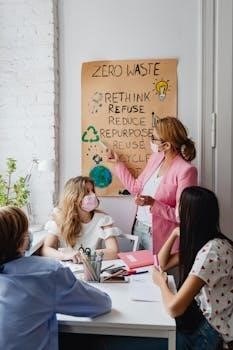The Creative Curriculum, used in many preschools, includes a Reduce, Reuse, Recycle study․ This unit framework helps teachers incorporate environmental themes into all learning centers․ It fosters skills in literacy, math, and science while promoting environmental awareness․
What is the Creative Curriculum?
The Creative Curriculum for Preschool, developed by Teaching Strategies, is a comprehensive early childhood education program․ It provides a structured approach for teachers to plan hands-on experiences, supporting the holistic development of young children․ This curriculum emphasizes active learning and exploration, enriching classroom activities․ The curriculum includes a Reduce, Reuse, Recycle Study, designed to help teachers integrate environmental stewardship themes across all learning centers․ It is used in preschool classrooms to help children explore, learn and grow․ This program allows educators to foster critical thinking and problem-solving skills while addressing key concepts in various subject areas․
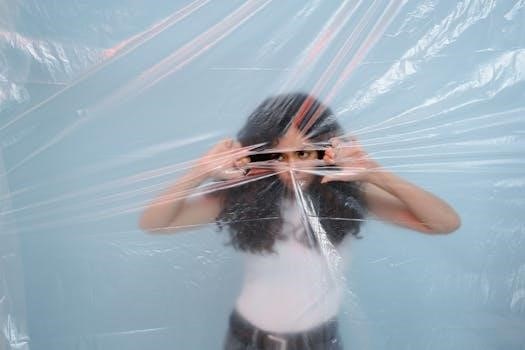
Reduce, Reuse, Recycle Study Overview
This study explores reducing waste, reusing items creatively, and recycling materials․ It promotes environmental awareness and problem-solving․ The goal is to encourage responsible actions for a sustainable future․
Core Themes and Learning Objectives
The core themes revolve around understanding waste reduction, creative reuse, and the recycling process․ Learning objectives include identifying recyclable materials, exploring ways to reuse common items, and grasping the importance of minimizing waste․ Children will learn to observe, investigate, ask questions, and solve problems related to environmental stewardship․ This study also aims to develop thinking skills and promotes awareness about their impact on the world․ Through hands-on experiences, children will develop an understanding of environmental responsibility and sustainability, fostering a lifelong commitment to caring for the planet․
Integration Across Learning Centers
This study seamlessly integrates into all learning centers․ In the block area, children can construct structures using recycled materials․ The art area can transform trash into creative projects․ In the dramatic play area, children can role-play recycling scenarios․ Science exploration can focus on sorting and identifying recyclable items․ The literacy center can feature books about recycling and conservation․ Math activities can involve counting and sorting recycled objects․ This integration ensures that the themes of reduce, reuse, and recycle are explored in a variety of engaging ways throughout the classroom environment, enhancing children’s understanding․
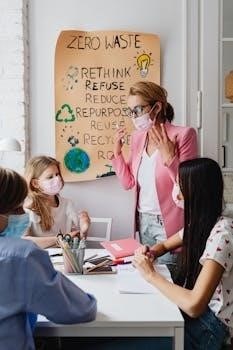
Curriculum Components and Resources
The curriculum provides study signs, material ideas, and book lists․ These resources support teachers in planning activities and engaging families in the reduce, reuse, and recycle study․
Recommended Books and Supplies
The Reduce, Reuse, Recycle study suggests a variety of books to enhance learning․ These books help young children understand the importance of environmental stewardship․ Recommended supplies include items for hands-on activities․ These can be collage materials like paper scraps, tinfoil bits, old magazines, newspapers, and cardboard pieces․ You can find various teaching guides featuring this study on Amazon, and book distributors like Booksource offer discounted pricing on relevant materials․ Using these resources helps educators create an engaging and informative learning experience․ This enables children to explore the concepts thoroughly and creatively․
Study Signs and Parent Support
To support the Reduce, Reuse, Recycle study, it is beneficial to have clear study signs posted in the classroom․ These signs help reinforce key concepts and provide visual reminders for children․ Additionally, a sign for parents can explain how they can support the study at home․ This might include ideas for conversations about recycling and reusing․ Encouraging parent involvement enhances the learning experience and helps children make connections between school and home․ Sending home activities also provides additional opportunities for learning and family engagement․ This collaborative approach promotes a deeper understanding of environmental responsibility․
Material Ideas and Study Topics
For the Reduce, Reuse, Recycle study, gather diverse materials․ Collect clean recyclables like plastic containers, cardboard, and paper scraps․ Include items for reuse such as old magazines, newspapers, and tinfoil bits for collage projects․ Explore study topics such as understanding different types of waste and the benefits of reducing, reusing, and recycling․ Consider studying how items are recycled and the processes involved․ This hands-on approach encourages children to investigate, ask questions, and explore solutions for waste management․ Focus on making connections with real-world examples of these concepts․
Classroom Activities and Engagement
Engage students through hands-on projects using recycled materials․ Set up a classroom recycling bin․ Conduct vocabulary and sorting activities to reinforce concepts․ Encourage active participation and exploration․
Hands-on Experiences and Projects
Classroom activities should actively involve children in the learning process․ Encourage students to create recycled projects using various materials like paper scraps, tinfoil, old magazines, and cardboard pieces․ Provide opportunities for them to explore and experiment with these materials․ Through hands-on experiences, children can learn about ways to reduce trash, reuse items creatively, and identify recyclables․ These projects allow for the development of thinking skills, such as problem-solving and prediction․ Children can also create art projects, like masks made from recycled materials, further emphasizing the concepts of reducing, reusing, and recycling․ These activities will make the topic relatable and engaging․
Classroom Recycling Bin Setup
Establish a clear and accessible recycling bin system within the classroom․ Place the recycling bin next to the garbage bin to highlight the differences․ This setup encourages children to develop a habit of separating waste․ Use clear labels or pictures to differentiate between recyclable and non-recyclable items․ Engage children in the setup process․ Talk about what can and cannot be recycled․ This will help them understand the purpose of the bins․ These measures should be easy for children to use and understand, promoting active participation in recycling efforts․ Make it a routine for the class․
Vocabulary and Sorting Activities
Introduce key vocabulary related to recycling, such as “reduce,” “reuse,” and “recycle․” Use visual aids to help children understand these terms․ Engage them in hands-on sorting activities․ Provide a variety of items, like paper, plastic, and metal․ Have the children sort them into different categories․ This activity reinforces the concept of recycling and promotes critical thinking․ Discuss why certain items can be recycled and others cannot․ Use vocabulary words as labels․ Encourage children to use the terms during their play and sorting activities․ Expand vocabulary to include types of waste, like “compost․”
Extending the Learning
Extend learning with home activities involving family, like creating recycled art projects; Explore virtual themes that support digital learning․ Encourage continuous engagement with recycling concepts․
Home Activities and Family Engagement
Extend the learning beyond the classroom by involving families in recycling efforts․ Encourage families to discuss what they throw away and why, examining items like plastic wrap and food packaging․ Engage children in sorting activities at home, identifying recyclable versus non-recyclable items․ Families can create recycled art projects using materials like paper scraps, tinfoil, and cardboard․ Explore opportunities for reusing items in fun and creative ways․ Ask children what they have thrown away today, and start a conversation on why․ Working together, families can help children develop a deeper understanding of reducing, reusing, and recycling, and its importance in their daily lives․
Virtual Classroom Themes
Personalize your students’ digital learning experience with three virtual classroom themes focused on reducing, reusing, and recycling․ These themes provide an engaging backdrop for online lessons and activities․ Incorporate interactive elements to keep students on task and connected to the study’s objectives․ These virtual spaces allow children to explore concepts related to environmental stewardship in an engaging, digital environment, reinforcing the lessons taught in the physical classroom․ By using virtual themes, you can make the study accessible for remote or hybrid settings, ensuring that learning can continue in any environment․ These themes enhance engagement and make the study more relevant for today’s learners․
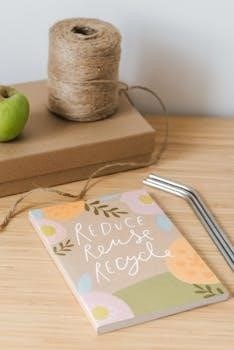
Assessment and Standards
This study aligns with CCLS and Creative Curriculum standards, ensuring that the activities and learning objectives meet established educational benchmarks for early childhood development and environmental awareness․
CCLS and Creative Curriculum Standards
The Reduce, Reuse, Recycle study integrates seamlessly with both the Common Core Learning Standards (CCLS) and the Creative Curriculum’s developmental objectives․ This ensures that while exploring environmental concepts, children are simultaneously developing crucial skills in areas such as literacy, mathematics, and social studies․ The curriculum framework provides a structured approach that allows teachers to effectively assess student progress against these standards․ This also provides children with opportunities to observe, investigate, ask questions, and solve problems, aligning with key learning goals․ The study enhances cognitive development and promotes critical thinking while fostering environmental stewardship․
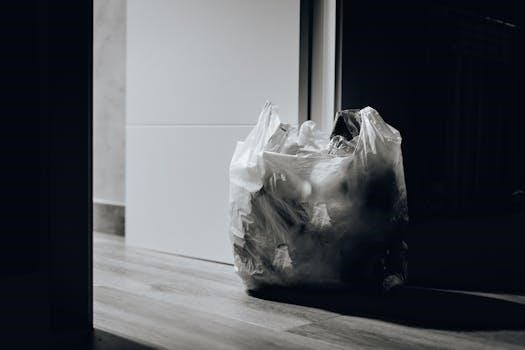
Additional Resources
Teachers can find supporting materials, like teaching guides, through various educational suppliers․ Booksource offers discounted books, and Etsy has handmade resources for the study․ YouTube can also be a source for videos․
Teaching Guides and Materials
The Creative Curriculum for Preschool Teaching Guide, featuring the Reduce, Reuse, Recycle study, is available from various sources․ These guides aren’t lesson plans but offer supporting materials to cut down on prep time․ They provide structured approaches to environmental themes and include study signs and material ideas․ Teachers can also explore resources from educational suppliers like Booksource․ The guides often contain information on integrating the study across learning areas․ Additionally, there are materials to support family engagement and various activities to be used in the classroom or sent home․ These resources help educators deliver an engaging and effective study․
Booksource and Educational Suppliers
Booksource is a key supplier of books for classrooms, providing discounted pricing and expertise․ They offer various materials that support the Creative Curriculum’s Reduce, Reuse, Recycle study․ These educational suppliers are crucial for sourcing appropriate books and resources for the unit․ They provide materials that engage preschoolers in investigating recycling and environmental awareness․ Beyond Booksource, other educational suppliers offer a range of materials, including teaching guides and activity kits․ These resources can help teachers create a comprehensive learning experience focused on reducing, reusing, and recycling․ These suppliers are valuable partners for enriching the classroom․
